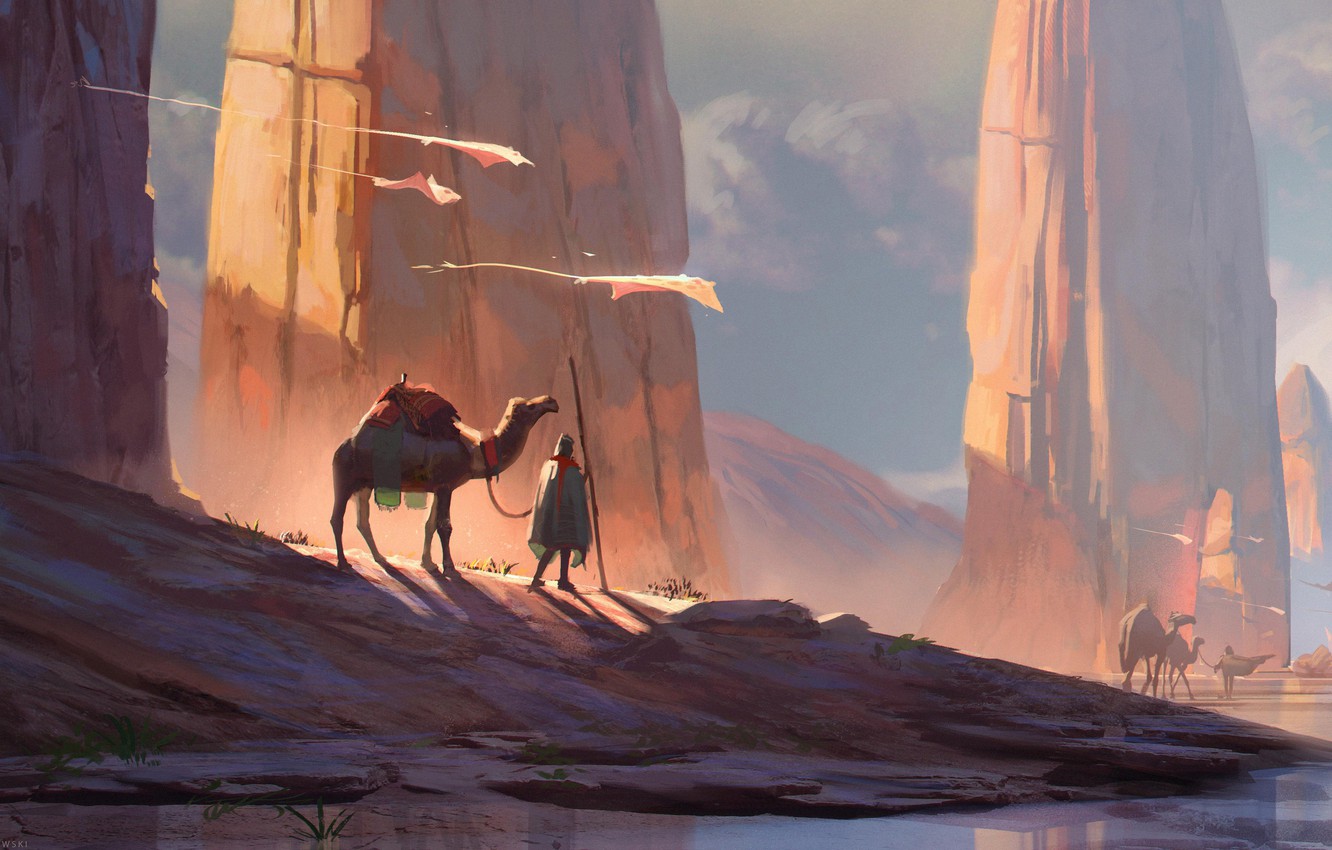Difference between revisions of "Desert (range)"
Tao alexis (talk | contribs) |
Tao alexis (talk | contribs) |
||
| Line 73: | Line 73: | ||
* [[Sable Antelope|Antelope (sable)]] | * [[Sable Antelope|Antelope (sable)]] | ||
* [[Giant Bat|Bat (giant)]] | * [[Giant Bat|Bat (giant)]] | ||
| + | * [[Warthog|Boar (warthog)]] | ||
* [[Wild Camel|Camel (wild)]] | * [[Wild Camel|Camel (wild)]] | ||
* [[Cheetah]] | * [[Cheetah]] | ||
| Line 96: | Line 97: | ||
* [[Fire Lizard|Lizard (fire)]] | * [[Fire Lizard|Lizard (fire)]] | ||
* [[Megalania Lizard|Lizard (megalomania)]] | * [[Megalania Lizard|Lizard (megalomania)]] | ||
| − | |||
</div> | </div> | ||
Revision as of 20:15, 2 September 2020
Deserts are regions where little precipitation produces hostile living conditions for plant and animal life. The lack of vegetation exposes the unprotected surface, intensifying weathering processes through wind and temperature changes from day to night. Resulting fragments are scattered, collecting into dust storms, level sheets of sand or piled high in billowing sand dunes. In other parts, small particles are blown away, leavking shattered mosaics of smooth or sharp stones, forming pavements a hundred miles wide.
Plants and animals living in the desert need special adaptations to survive. Many of the monsters that dwell in the desert are the sort that have no need of food, or which may travel hundreds of miles in a day, in order to obtain it. Humanoids surviving in the desert cluster around areas where water can be drawn up from below ground or collects on the surface. Dehydration is an important concern. Desert water is often harsh to taste and smell, but will nevertheless sustain life.
The desert is productive in some degree, as the exposed rock reveals places where valuable minerals such as ores, salt, rare minerals and gems can be obtained. Additionally, plants growing in the desert provide rare materials such as incense and natural resins, both of which cannot be found anywhere else. These goods are exported out of the desert by caravans of camels. As deserts are large geographic obstructions between civilizations, tenuous trade routes are forged, enabling goods from one climate or culture can be exchanged with another.
Some arid lands that are thought of deserts are more properly thought of as barrens, as these regions possess short grasses and extensive areas of scrub brush.
Major Deserts
Below is a list of the most extensive deserts in the world:
- Arabian - the Arabian Peninsula & Empty Quarter
- Atacama & Loma Coast - along the west coast of South America
- Gobi - north central China
- Great Sandy - undiscovered Australia
- Kalahari - southern Africa
- Namib - southwest coast of Africa
- Patagonia - the southern part of South America
- Sahara - the largest desert, in northern Africa
- Syrian - between Palestine and the Persian Gulf
- Takla Makan - far western China
- Taldy Kurgan - northern Turkestan
- Thar - west Indian subcontinent
- Ust-Urt & Kara Kum - vicinity of the Aral and Caspian seas
Common Features
Below is a list of elements and features that are common to desert ranges:
- Bench
- Black Sand
- Cauldera
- Cliff Dwelling
- Crater
- Depression
- Erg
- Esker
- Fossa
- Gorge
- Graben
- Labyrinthus
- Lava Flow
- Lightning Sand
- Mare (sand plain)
- Mesa
- Mountain Knot
- Natural Bridge
- Oasis
- Petrified Forest
- Phantom City
- Regolith
- Rock Station
- Salt Flat
- Sand Crust
- Scabland
- Scrub Field
- Sinkhole
- Stone Desert
- Tholus
- Volcanic Gas
- Wadi
- Wailing Waste
Desert Creatures
The following monsters are common to desert ranges.
- Ant (giant bull)
- Antelope (sable)
- Bat (giant)
- Boar (warthog)
- Camel (wild)
- Cheetah
- Chimera
- Dog (wild)
- Dragonis Aeriochalkos (brass dragon)
- Dragonne
- Eagle (giant)
- Elephant (Asiatic)
- Emu
- Giant (fire)
- Griffon
- Horse (wild)
- Hyena
- Jackal (golden)
- Jackalwere
- Jaguar
- Lamassu
- Lamia
- Leopard
- Leucrotta
- Lion
- Lizard (fire)
- Lizard (megalomania)
